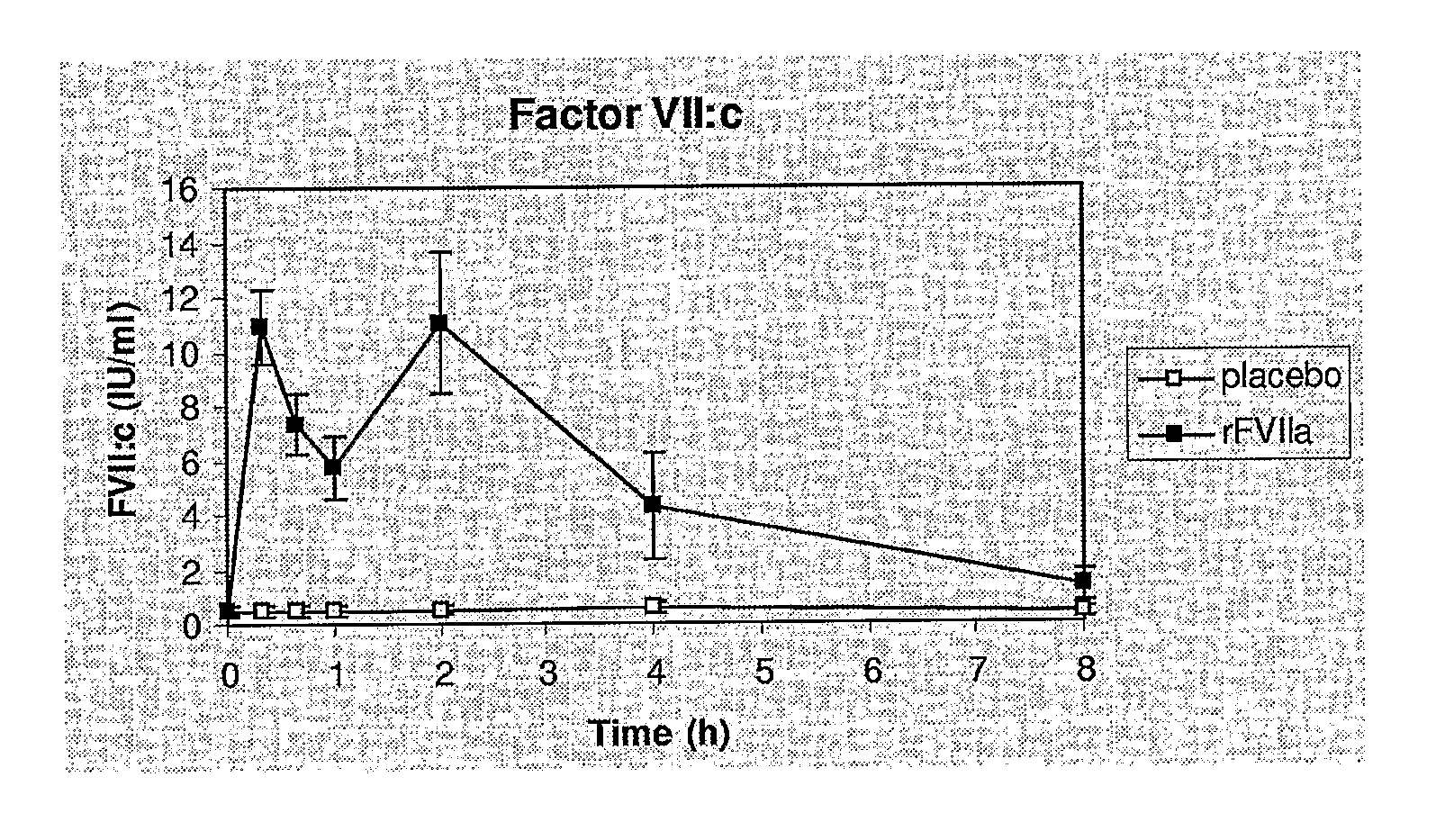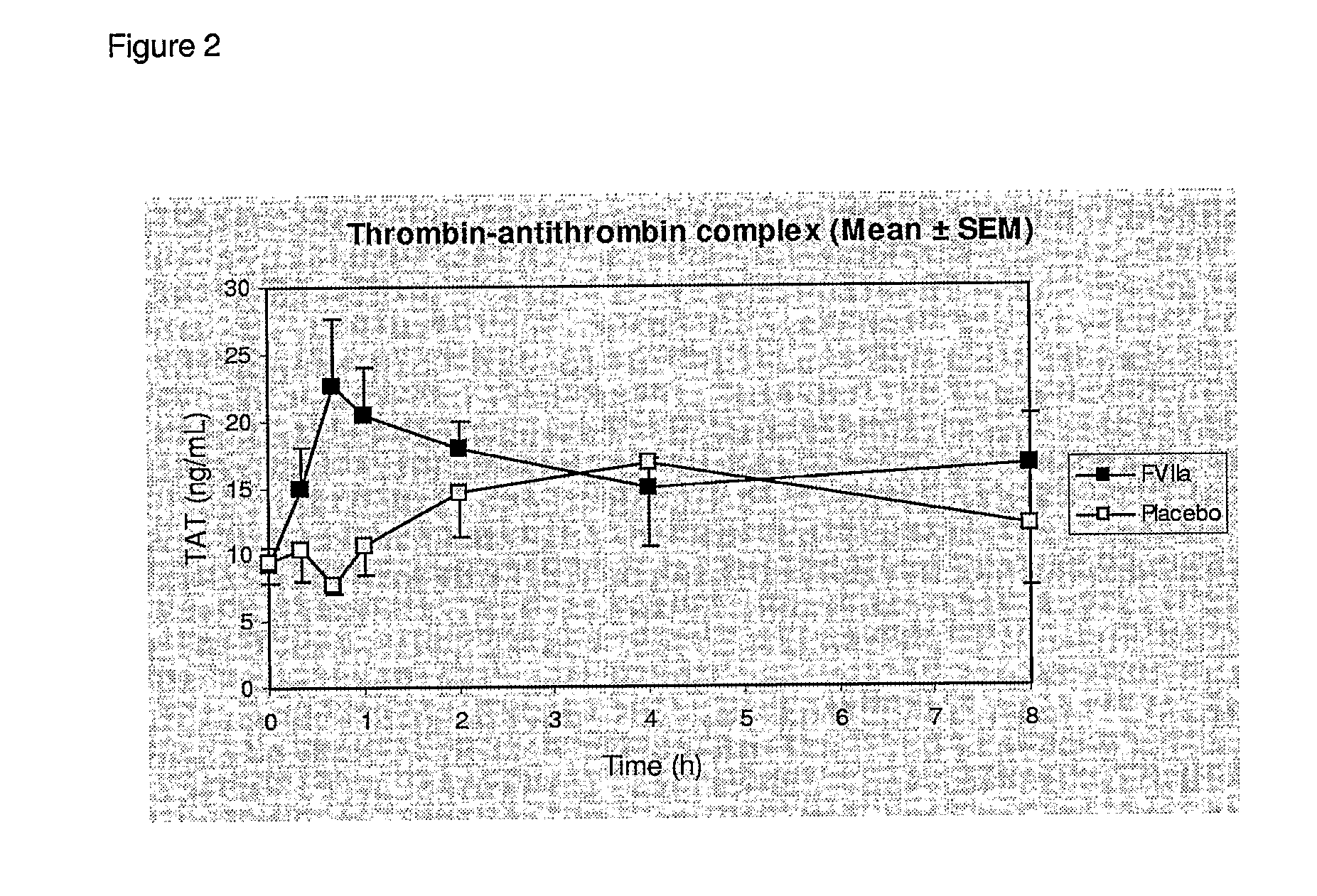Use of Factor VIIa for the Treatment of Burn Trauma
a technology of factor viia and burn trauma, applied in the field of acute treatment of burn trauma, can solve the problems of large volume of blood loss, and achieve the effect of reducing the requirement of blood transfusion
- Summary
- Abstract
- Description
- Claims
- Application Information
AI Technical Summary
Benefits of technology
Problems solved by technology
Method used
Image
Examples
example 1
[0124]The inventors of the present invention have investigated the pro-hemostatic effect and safety of a Factor VIIa or a corresponding amount of a Factor VIIa equivalent, such as NovoSeven® in (i) a standardised cohort of patients, were bleeding were a major clinical problem, (ii) patients not having concurrent illnesses or medications that could interfere with the study result interpretation, (iii) patients treated in a standardised way, with regard to surgery, anaesthesia, transfusion practice, postoperative treatment and rehabilitation.
Factor VIIa Administration to Burn Trauma Victims
[0125]The following study was performed in order to assess efficacy and safety of recombinant activated coagulation factor VII (rFVIIa, NovoSeven®) as adjunctive therapy for bleeding control in severe burn trauma.
[0126]We have conducted a placebo-controlled, randomized study in 18 patients with burn injuries requiring skin grafting of more than 10% of the TBSA. A dose of 80 μg / kg rFVIIa were adminis...
example 2
[0162]Eighteen consecutive patients scheduled for the surgery were randomised to receive either placebo or 40 μg / kg rFVIIa administered at first skin incision, and a second dose (40 μg / kg) at 90 minutes later. Blood transfusion requirements during, and up to 24 hours post-surgery were compared. In addition, postoperative complications commonly seen in patients with burn injury as well as adverse events related to rFVIIa were monitored.
[0163]rFVIIa significantly decreased the total number of units of blood components transfused compared with placebo (17 vs 37, p=0.01). We further observed a trend towards improved graft survival (p=0.1) and reduction in multiple organ failures (p=0.08) in the rFVIIa-treated group. There were no adverse events, in particular thrombo-embolic events, considered to be drug related.
Study Design:
[0164]The study was a single-centre, randomised, double-blind, placebo-controlled trial conducted at the University Hospital of Copenhagen. The trial protocol was a...
PUM
| Property | Measurement | Unit |
|---|---|---|
| Fraction | aaaaa | aaaaa |
| Time | aaaaa | aaaaa |
| Time | aaaaa | aaaaa |
Abstract
Description
Claims
Application Information
 Login to View More
Login to View More - R&D
- Intellectual Property
- Life Sciences
- Materials
- Tech Scout
- Unparalleled Data Quality
- Higher Quality Content
- 60% Fewer Hallucinations
Browse by: Latest US Patents, China's latest patents, Technical Efficacy Thesaurus, Application Domain, Technology Topic, Popular Technical Reports.
© 2025 PatSnap. All rights reserved.Legal|Privacy policy|Modern Slavery Act Transparency Statement|Sitemap|About US| Contact US: help@patsnap.com



